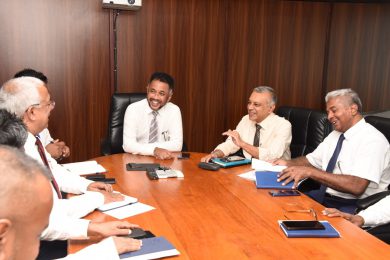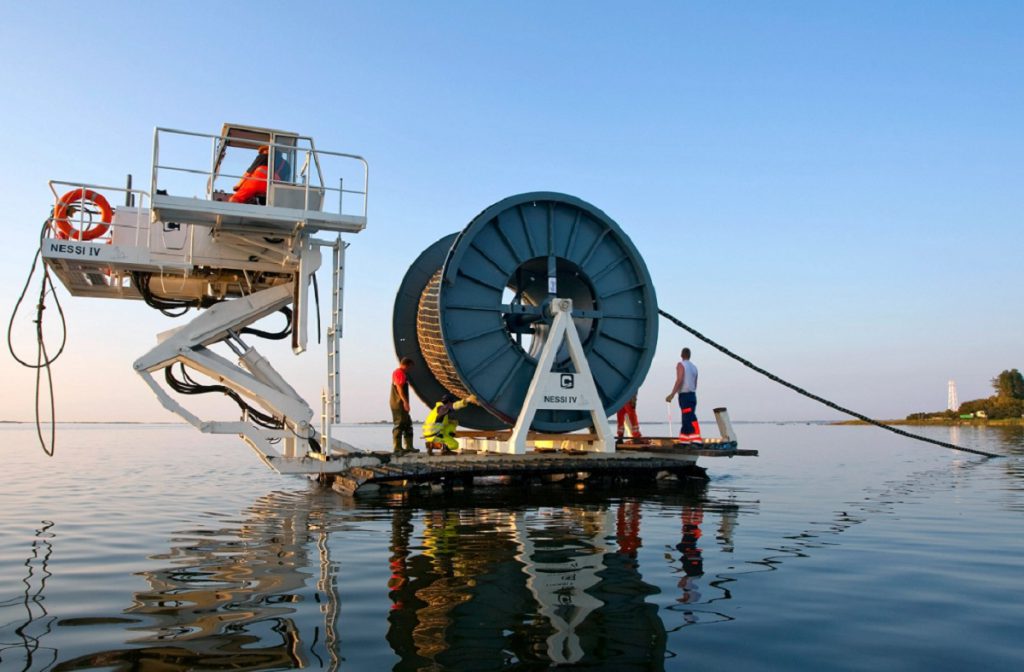Maritime’s role in the international telecommunications network
Ships do more than carry nearly 90% of trade across the globe. They are also integral to the telecommunications networks that criss-cross the seabeds of our oceans. According to Visual Capitalist, there are over 420 subsea cables in service, running 1.1 million km around the globe. Many of these are fibre optic cables facilitating the movement of around 98% of the digital data streamed to our TVs, phones and computers for fast broadband and data connections.
Costly to install, a number of these data cables are privately owned by communications giants such as Google, Facebook, and Microsoft. According to the Mid-Atlantic Ocean Data Portal, cables cost around $200 million to $500 million to build, “and are often jointly funded by a consortium of telecom companies.”

According to the same source, one of the highest densities of submarine telecommunications cables can be found on the North Atlantic, with 19 cables currently active in the Mid-Atlantic region. In fact, the Atlantic was the first ocean to host a subsea cable when 1858 it started carrying telegraphy data between Scotland and Nova Scotia, Canada.
The existing Atlantic-region cables will soon be joined by a significant installation scheduled to come online this year. Google’s Grace Hopper subsea cable (whose namesake is the computer science pioneer) is 6,250 km-long cable that crosses the Atlantic from the United States, at New York, connecting the United Kingdom on the southwest coast at Bude, Cornwall, and Spain at Bilbao.
It is Google’s first investment in a private subsea cable route to the UK and its first-ever route to Spain. Cable installation was completed in September 2021 and according to Google will be operational this year. According to Data Center Dynamics, it is the highest capacity cable in the world.
“Private subsea cables allow us to plan effectively for the future capacity needs of our customers and users around the world, and add a layer of security beyond what’s available over the public internet,” Google said in a blog.
Grace Hopper joins Google’s three other private subsea cables: Curie (US and Chile, Dunant (US and France) and Equiano (Africa and Europe).
Modern cables use fibre-optic technology to carry digital data, and are laid up to around 1,500 metres underwater by specialist seagoing vessels called cable layers or cable ships. MarineTraffic data reveals there are a total of 168 cable layers, of which 70 are active and reporting their latest position via their AIS transponders.
The largest vessels can carry around 2,000km of cable which is coiled around a drum-shaped, rotating unit onboard, known as the cable carousel.
The protected cable is released via the stern of the vessel, where it is allowed to fall to the seabed. In areas where there are strong currents, fishing trawler routes, dredging, or any other activities which could interfere with or damage the cables, these vessels can also dig a trench, using a plough, into which the cable can be placed so that it is protected.
Some cable layer ships are also able to check and fix broken cables, and carry out other maintenance requirements on previously-laid cables, although vessels have also been designed specifically for this purpose.
Grace Hopper was laid by US-based subsea cable specialist SubCom. The MarineTraffic database data reveals that it operates around six vessels, one of which is the CS Responder. According to a report from Afloat, the Responder was operating as part of the project off the coast of Ireland in May and June last year. The 2001-built vessel has a seven metre draft, overall length of 139.15 metres, and is 21 metres wide.
The MarineTraffic Live Map past track tool shows that the vessel has spent August in the North Sea between the UK and France, and its AIS signal shows its final destination as ‘cable grounds’.
Elsewhere in the world, Google also announced last year a 12,000km installation connecting Singapore, Japan, Guam, the Philippines, Taiwan and Indonesia. The new subsea cable, known as Apricot, should be operational in 2024. It has also revealed plans for Echo – the first cable to directly link the US and Singapore.
A further Pacific Ocean cable will also be introduced linking California in the US with Japan. Known as the Juno Cable System, the 10,000km cable will, according to Cable Technology News, provide the largest data capacity between the two countries and is set to be completed in 2024.
Meanwhile, the new Oman Australia Cable is scheduled to be operational this year as it moves data under the South China Sea.
With the number of new cables coming online, and their maintenance (cables have an average lifespan of 20 years), the future’s bright for the global cable ship fleet.
These activities are also a further example of how maritime quietly connects communities and regions across oceans and makes the world an ever smaller place.
Views are personal
Featured Photo: Germany Mecklenburg-Western Pomerania Baltic Sea – undersea cable to Hiddensee island (Photo Credit: Jens Köhler/ullstein bild via Getty Images)
Penny Thomas is Account Manager at London based public relations agency, Navigate PR. She writes for Maritime Traffic where this piece first appeared.























